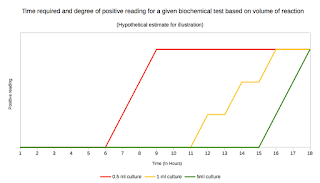A Simple solution to complicated shiga toxin problem
We all know “Shigella” a common gut pathogen. Shiga toxin is a virulence product, main culprit of shigellosis. Since I have read the paper by Mukhopadhyay, published in science I desperately wanted to write about this toxin (For the paper link look at further reading section).
Basically, Shiga toxin is a 2 domain (A-5B) structure. Shiga toxin is the prototype of the Shiga toxin family (Oh he has a family too!!) and almost identical to the Stx1, differing by just a single amino acid (Oh now that’s quite close). Remember, Shiga toxin Stx is produced by Shigella dysenteriae; Stx-1 and Stx-2 are produced by E coli strains.
It’s well known to all of us, that the shiga toxin enters via a macropinosome and functions as an N-glycosidase, cleaving a specific adenine nucleobase (position 4324) from the 28S RNA of the 60S subunit of the ribosome, thereby halting protein synthesis. The most common pinosomal entry is via clathrin coated pits. But here’s something that many of us don’t know. The target of ricin and shiga toxin is the 28S RNA of 60S subunit (Lot of implications, especially in cellular transport pathway research). The A moiety of shiga toxin is processed by furin. Furin is a ubiquitous subtilisin-like proprotein convertase. It is the major processing enzyme of the secretory pathway and is localized in the trans-golgi network. Shiga toxin is transported in a retrograde method to the endoplasmic reticulum. In summary, the A chain produces the toxic effect and the B chain helps in binding.
Fig taken from Clare etal. Bacterial Toxins: Friends or Foes; Volume 5, Number 2—April 1999. Emerging Infectious diseases.
So folks, I now guess you got an idea of how the shiga toxin is making a move in the cell. The effects of the shiga toxin are
Enterotoxic Effects:
- Adheres to small intestine receptors
- Blocks absorption (uptake) of electrolytes, glucose, and amino acids from the intestinal lumen.
Cytotoxic Effect
1. Inhibition of protein synthesis
2. Cell death
3. Microvasculature damage to the intestine
4. Hemorrhage
Neurotoxic Effect-Fever, abdominal cramping are considered signs of neurotoxicity
Research has dug variety of ways, from vaccination to blockers to try and quarantine this poison that causes many hospitalizations. However, a recent research by Mukhopadhyay has speculated that this isn’t as complicated as others are trying to show it. Metal manganese (Mn2+) blocks endosome-to-Golgi trafficking of Stx and caused its degradation in lysosomes. Mn2+ targets the cycling Golgi protein GPP130, which Stx bound in cells during sorting into Golgi-directed endosomal tubules that bypass lysosomes. Sorting into the Golgi-destined membrane tubules which depends on Shiga toxin binding to GPP130. Manganese protects cells by down-regulating this crucial point- “GPP130”. Without GPP130 to bind, Shiga toxin does not enter the endosomal membrane and is now available for degradation in lysosomes.
So next time someone says “He’s suffering from shigellosis” give him manganese containing foodstuff. A variety of healthy foods provide this including Raspberries, pineapple, nuts, spaghetti, oat bran etc.
Further reading
1. Somshuvra Mukhopadhyay, Adam D. Linstedt. Manganese Blocks Intracellular Trafficking of Shiga Toxin and Protects Against Shiga Toxicosis. Science 20 January 2012: Vol. 335 no. 6066 pp. 332-335.
2. http://medicalxpress.com/news/2012-01-reveals-potential-manganese-neutralizing deadly.html






Comments
Post a Comment